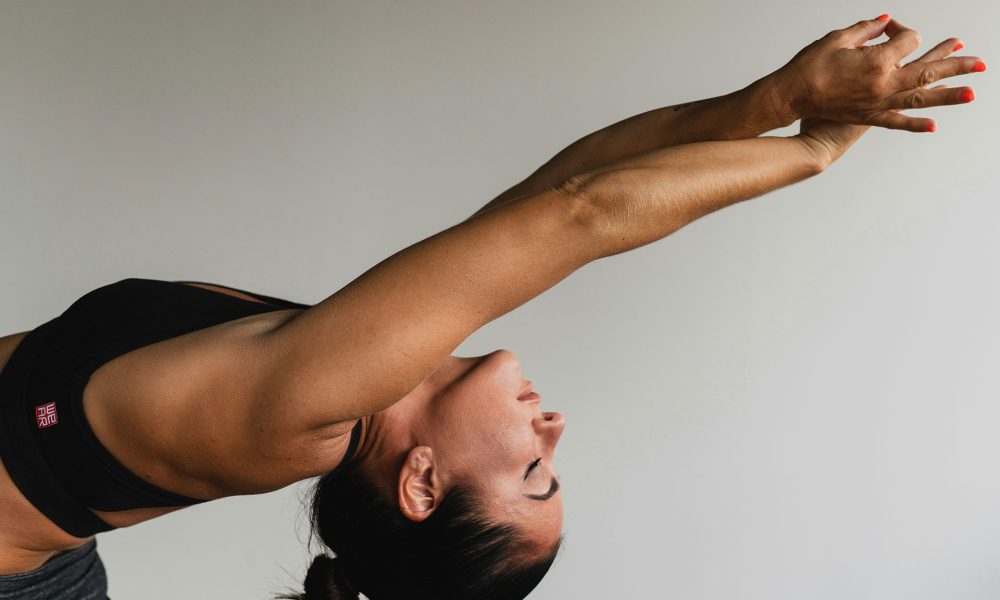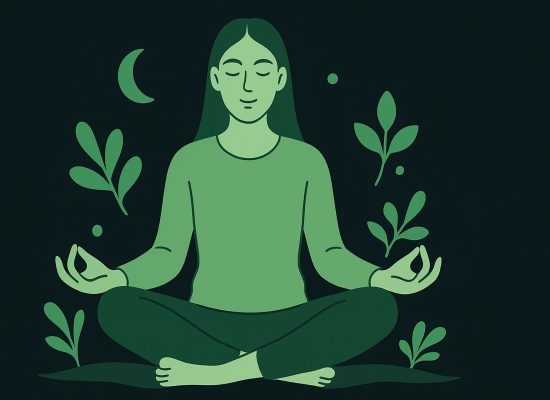In today’s fast-paced world, finding balance can feel like a challenge. That’s where yoga and meditation come in—two time-tested practices that help strengthen the body, calm the mind, and bring a sense of clarity. If you’ve ever wondered about meditation vs yoga, you’re not alone. While yoga is often associated with movement, flexibility, and breathwork, meditation focuses on stillness, mindfulness, and mental resilience.
Table Of Content
- Unlocking the Relationship of Yoga and Meditation: Ancient Practices in a Modern World
- What Are the Key Differences Between Yoga and Meditation?
- Benefits of Combining Yoga and Meditation
- Best Yoga and Meditation Techniques for Beginners
- Download Siddha Meditate To Develop Your Meditation Practice
- FAQ about Meditation vs Yoga
But the truth is, they aren’t in competition—they work together to create a well-rounded practice that supports both physical and mental well-being. Whether you’re looking for stress relief, improved focus, or just a moment to reset, combining yoga and meditation can help you feel more grounded, present, and in control of your day. In this article, we’ll explore the synergy between yoga and meditation, their benefits, key differences, and how you can incorporate them into your routine for a healthier, more balanced life.
Unlocking the Relationship of Yoga and Meditation: Ancient Practices in a Modern World
Yoga and meditation are ancient practices that have stood the test of time, evolving from spiritual rituals to powerful tools for mental and physical fitness. At their core, both offer ways to cultivate mental resilience, self-awareness, and overall well-being—early forms of self-study that resemble what we now recognize as modern day psychology practices.
Even in the oldest scriptures originating from the Indian subcontinent, yoga is described in various ways. Patanjali, one of yoga’s earliest sages, defined it as the control of the mind and its desires, while Vyas believed yoga was about attaining an extreme sense of awareness. Another key text, Yoga Vasistha, refers to yoga as a curriculum designed to help us control the mind, body, and soul. In modern times, yoga’s most common association is with physical postures and breathing, but its benefits reach further than just the body.
It’s important to recognize that just as language evolves over time to reflect changing needs in society, so has yoga. While its ancient roots remain tied to spirituality in the Indian subcontinent, the practice has adapted to the modern world. This evolution doesn’t diminish yoga’s core belief—that it is a path toward self-awareness, balance, and resilience. In fact, it enhances its relevance today, allowing yoga to meet the demands of our fast-paced, often stressful lives. By combining the benefits of yoga and meditation, we can cultivate both mental and physical fitness in ways that support our well-being in the modern world.
How Yoga and Meditation Work Together
In today’s context, yoga prepares the body by releasing tension, calming the nervous system, and promoting mindful breathing. This physical foundation creates the perfect space for meditation to deepen mental clarity and focus. Meditation trains the mind to remain calm, attentive, and present, amplifying the benefits of yoga.
When practiced together, yoga and meditation create a powerful synergy that nurtures both body and mind, offering an invaluable balance for navigating life’s challenges. Combining these practices enhances focus, productivity, and mental clarity, helping us stay grounded and present in a world that moves ever faster.

What Are the Key Differences Between Yoga and Meditation?
Yoga and meditation have their unique strengths, but they don’t have to be an either/or choice. Yoga is a great way to combine movement, breathwork, and mindfulness, helping you build physical and mental fitness. It’s a full-body practice that enhances flexibility, balance, and focus, and often requires dedicated time and space—perfect for when you have the time to unwind and stretch it out.
Meditation, however, is incredibly versatile and can be practiced anytime, anywhere. Whether you’re commuting, doing chores, or even having a conversation, meditation is a tool you can use to stay mindful in real time. It’s not just for the quiet, sit-down sessions; it’s about integrating mental fitness into your daily life, without needing to carve out a full hour for a yoga class or retreat. With the right yoga meditation techniques, you can train your focus, emotional resilience, and mental clarity, all while going about your day.
If yoga feels like a challenge—whether because of flexibility or time constraints—that’s totally okay! Meditation can still be a powerful tool for your mental fitness goals. In fact, even if your focus is on physical fitness, like gaining muscle at the gym, meditation can help you stay mentally strong, improve your focus, and develop healthier habits that support your fitness journey. It’s a complementary practice that goes hand-in-hand with any physical goal, helping you stay disciplined and resilient, no matter what kind of workout routine you’re following.
When considering Meditation vs Yoga, it’s important to recognize that you don’t have to choose one over the other. While yoga strengthens the body, meditation strengthens the mind—together, they create a balanced approach to overall well-being, no matter your lifestyle.
Which Is Better, Yoga or Meditation?
The truth is, neither is “better”—they each serve different but complementary purposes. Meditation vs yoga is often discussed, but the reality is that both practices offer unique benefits. Yoga is fantastic for enhancing both physical and mental fitness. It helps improve flexibility, balance, and focus, while also calming the body and releasing tension. Meditation, on the other hand, is all about training the mind. It cultivates mental clarity, emotional regulation, and resilience, helping you stay grounded even in stressful situations.
When you combine yoga and meditation, you get the best of both worlds: a holistic routine that strengthens both your body and mind. So, instead of choosing one over the other, think of them as a dynamic duo that works together to keep you feeling balanced and centered.
If you’re new with meditation, you can read “The Science Behind Meditation“
Benefits of Combining Yoga and Meditation
Research supports the powerful synergy between yoga and meditation, highlighting their combined benefits for mental and physical well-being. A study published in the (NCBI) explores how yoga, which often integrates meditation, enhances overall quality of life by increasing mindfulness, reducing stress, and improving energy levels. The study emphasizes that yoga’s physical movement paired with meditation’s mental training creates a holistic approach to wellness, promoting better focus, resilience, and emotional regulation. Whether you practice one or both, their effects complement each other, making them valuable tools for maintaining balance in daily life.
When you combine yoga and meditation, you’re tapping into a powerful routine for both body and mind. While meditation vs yoga often sparks debate, the truth is that practicing both together offers unique benefits. Mentally, this duo enhances focus, reduces stress, and improves emotional regulation. Physically, it helps with posture, flexibility, and balance. The synergistic effect of practicing both maximizes their individual benefits, leaving you feeling stronger, more centered, and more resilient overall.
Should You Meditate First or Do Yoga?
Traditionally, yoga was practiced first—using asanas (yoga postures) and pranayama (breathwork) to prepare the body and mind for meditation. But today, there’s flexibility to adapt based on your goals. If you want to release tension and calm your body, yoga first is the way to go, setting you up for a focused meditation. If you’re looking to center your mind before moving, meditation first can help you approach yoga with more clarity and intention. You can even think of yoga as a moving meditation, combining your movement and mindfulness practice into one! All approaches work, so it’s all about what feels right for you!
For a deeper experience, many people turn to yoga and meditation retreats, where structured sessions allow them to fully immerse in both practices. These retreats provide a dedicated space to disconnect from distractions, reset mentally, and refine your practice in a supportive environment.
Best Yoga and Meditation Techniques for Beginners
- Yoga Techniques: Start with gentle poses like Child’s Pose, Simple Supine Twist, and Butterfly Pose to build flexibility and mindfulness. Use props like blocks, straps, and bolsters for extra support, especially if you’re new to yoga or less flexible. Skip the heated power classes and try a gentle session that focuses on breath, presence, and gradual flexibility.
- Meditation Techniques: Begin with simple practices like mindful breathing, body scans, or short guided sessions. Start with just 5 minutes a day, then gradually increase to 10 or 15 minutes. A meditation app is a great way to guide your practice, and scheduling sessions into your calendar with Siddha Meditate helps make it a consistent habit.

Download Siddha Meditate To Develop Your Meditation Practice
Yoga and meditation are timeless tools for mental and physical fitness—and they’re more relevant than ever. Just 5–10 minutes of daily practice can boost focus, reduce stress, and build resilience. With the Siddha Meditate app, you can easily integrate these practices into your busy life, enhancing your mental fitness and well-being anytime, anywhere. Start your 7 day free trial today!
FAQ about Meditation vs Yoga
1. What are the benefits of combining yoga and meditation?
Combining yoga and meditation creates a powerful routine for both body and mind. Yoga strengthens the body, improves flexibility, and enhances breath control, while meditation cultivates mental clarity, emotional resilience, and focus. Together, they reduce stress, improve posture, and help build a sense of balance in daily life. Rather than thinking of them separately, practicing both amplifies their benefits, making it easier to stay centered and grounded in today’s fast-paced world.
2. How do yoga and meditation complement each other?
In modern practice, yoga and meditation go hand in hand. Yoga helps release physical tension, calm the nervous system, and improve breath control, creating the perfect foundation for meditation. Meditation, in turn, trains the mind to stay present, focused, and resilient. This synergy allows for a deeper sense of mindfulness, helping individuals navigate daily challenges with greater ease and awareness.
3. Should I practice yoga or meditation first?
The Meditation vs Yoga debate often comes down to personal preference. Traditionally, yoga was practiced first to prepare the body and mind for meditation. However, there is no fixed rule—you can adapt based on your needs. If your goal is to release tension and calm the body, start with yoga before meditating. If you want to focus your mind before movement, meditating first can help you approach yoga with more clarity and intention.
4. Can I benefit from meditation if I find yoga challenging?
Absolutely! If yoga feels difficult due to flexibility or time constraints, meditation is still an excellent tool for mental fitness. Even without physical movement, meditation improves focus, emotional resilience, and discipline, making it a perfect complement to any wellness routine. Whether you’re working out at the gym, managing stress, or simply trying to stay present, meditation supports both mental and physical well-being.







